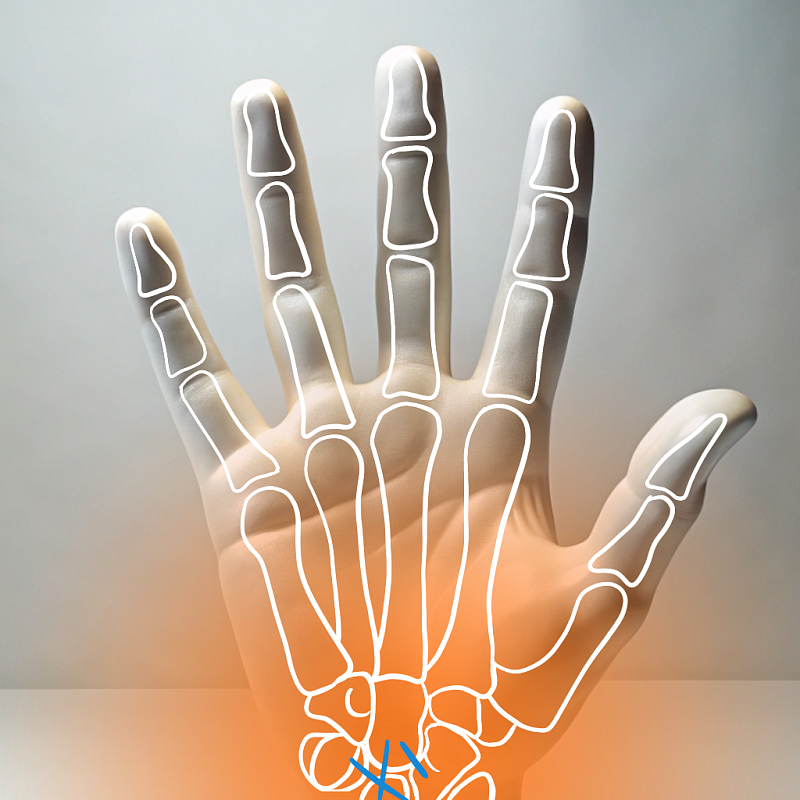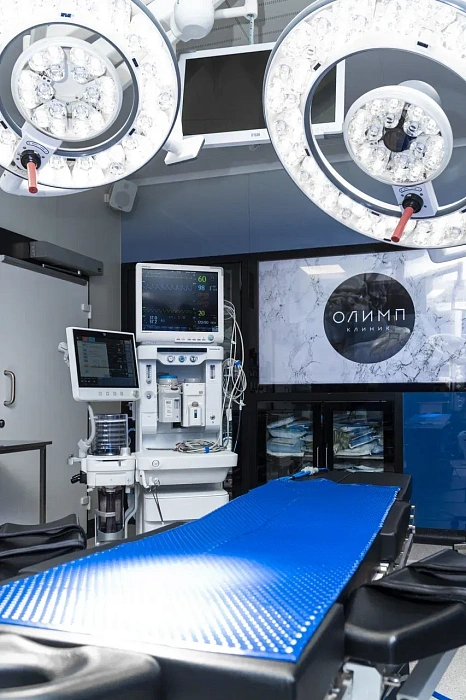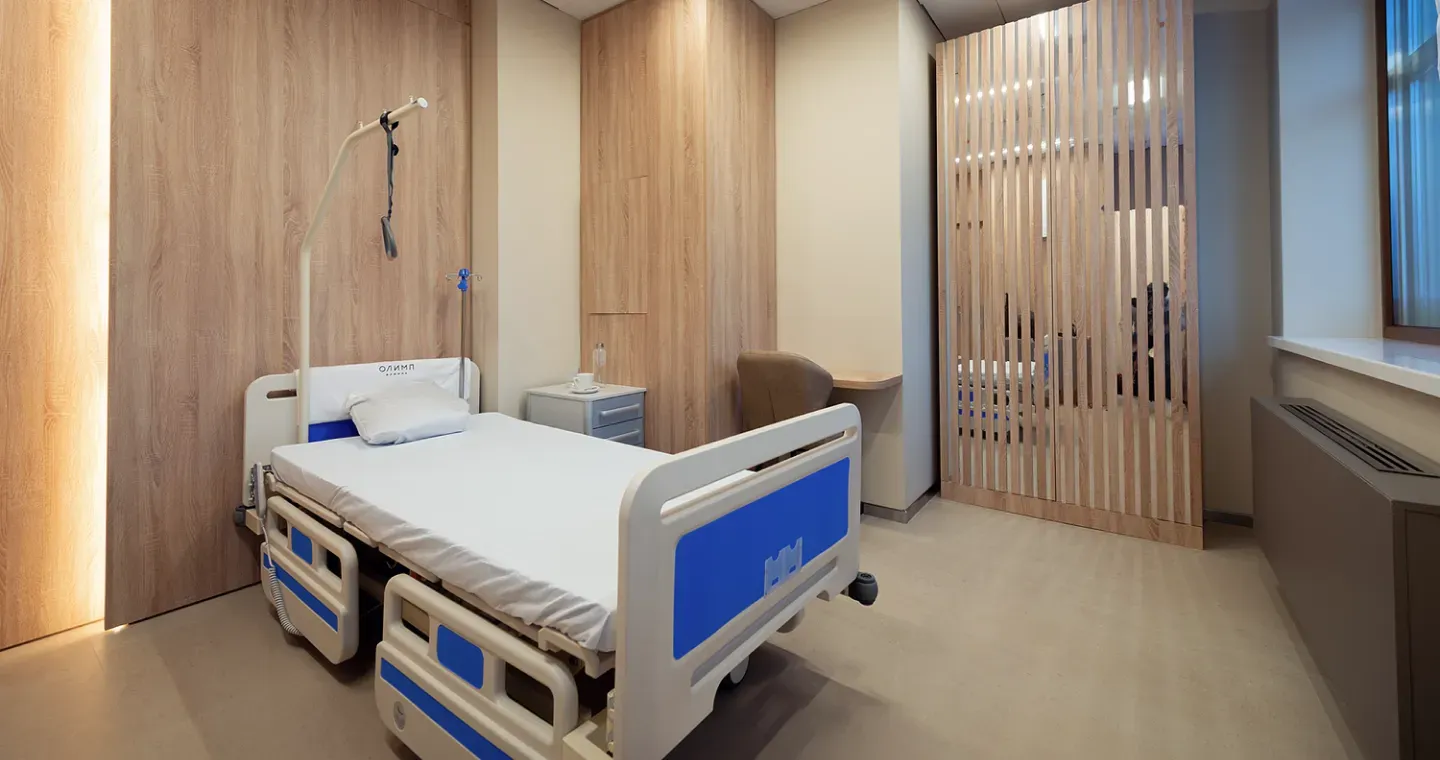Arthroscopic revision of the cystic joint
The condition of the wrist joints determines the functioning of the hand. Arthroscopic revision is a minimally invasive diagnostic procedure that assesses the condition of the joint tissues, which is necessary for planning subsequent treatment.

The wrist joint is prone to numerous injuries and diseases, including arthritis, ligament injuries and cartilage abnormalities. Arthroscopic revision allows the internal structures of the joint to be visualised and therapeutic manipulations to be performed through small incisions.
The advantages of arthroscopic revision are minimal trauma, short rehabilitation period and low risk of complications. The procedure allows the patient to quickly return to normal life and prevent the development of chronic problems. The procedure is effective in treating a wide range of conditions such as ligament tears, inflammation and degenerative changes. Arthroscopy is also used to remove loose masses, cartilage debris and treat other intra-articular pathologies.
Complete blood count and urine test X-ray of the wrist joint MRI or CT scan for detailed assessment Consultation with a general practitioner and anaesthesiologist
Through several small punctures, the doctor inserts surgical instruments and an arthroscope - a miniature camera. After diagnosing the condition of the joint and identifying the damage, the surgeon can perform therapeutic manipulations: remove damaged tissues, perform joint repair, sanitation and other interventions.
An arthroscope with a camera that displays the joint. Micro instruments for precise manipulations X-ray equipment
After surgery, you may experience pain and swelling in the wrist. You will be prescribed analgesics and possibly anti-inflammatory drugs. A rehabilitation therapist will prescribe a set of procedures to restore joint and muscle function. This may include physiotherapy and exercise therapy.
Benefits
Minimal invasiveness
The operation does not leave large surgical incisions and minimizes trauma to surrounding tissues.
Fast recovery
Patients can recover from arthroscopic revision of the wrist joint faster than from more traditional surgical interventions.
Lower risk of complications
Modern equipment that minimizes tissue injury.
Consultation
The doctor will conduct a detailed examination of your brush, take an anamnesis (medical history) and ask you about the symptoms and problems associated with the brush. To more accurately determine the problem, various diagnostic tests may be required, such as X-rays, MRI, ultrasound.

Operation
The surgeon makes small incisions in the skin, through which he inserts an arthroscope - a miniature camera. With the help of an arthroscope, the surgeon has the opportunity to assess the condition of the hand and, if necessary, perform surgical manipulations. During arthroscopy, the surgeon can eliminate the damaged tissue, repair the joint.

Rehabilitation
Pain and swelling are a normal reaction to the intervention. The doctor will prescribe you analgesics and possibly anti-inflammatory drugs. Physical therapy is an important part of rehabilitation after arthroscopic revision of the wrist joint to restore mobility, strength and functionality of the hand.

Frequently Asked Questions
What are the indications for arthroscopic revision of the wrist joint?
How long does rehabilitation take after arthroscopy?
Under what anesthesia is the operation performed?
Didn't find an answer to your question?
You can describe your problem in detail and ask a question to the doctor. He will answer you and help you find a solution
Врачи
Смотреть всех врачейCandidate of Medical Sciences. Hand Surgeon, Orthopedic Trauma Surgeon, Microsurgeon. Head of the Hand and Microsurgery Center. Member of the Interregional Public Organization “Hand Surgery Society”.
Orthopedic Trauma Surgeon
Hand Surgeon, Orthopedic Trauma Surgeon, Plastic Surgeon, Microsurgeon. Senior Physician of the Hand and Microsurgery Center. Member of the Interregional Public Organization “Hand Surgery Society”.
Doctor of Medical Sciences, Professor. Hand surgeon, orthopedic trauma surgeon, plastic surgeon, microsurgeon. Scientific Director of the Hand and Microsurgery Center. Chairman of the Interregional Public Organization “Hand Surgery Society”
Hand Surgeon, Plastic Surgeon, Microsurgeon. Senior Physician of the Hand and Microsurgery Center.
Indications and contraindications
Indications
The consequences of injuries
Fractures of the bones of the wrist
Violation of the function of the wrist
Violation of the bending and extending function of the wrist
Performance of arthrodesis
Joint operation
Violation of stabilization of the bones of the wrist
Violation of alignment of the bones of the wrist between each other in one row
Soft tissue injuries
Damage to soft tissue structures
Damage to the borders of the wrist joint
Pain, swelling and restriction of arbitrary movements in the damaged area
Expected effect
Restoring mobility
Surgery can help restore the mobility of the hand and joint, which is especially important for patients suffering from diseases or injuries of the hand.
Improving the quality of life
Arthroscopic revision can help reduce pain and improve the functionality of the brush.
Diagnosis and assessment of damage
Arthroscopy allows doctors to visualize the structures of the wrist joint, such as articular surfaces, ligaments, cartilage and tendons. This helps in accurate diagnosis and assessment of the nature of damage.
Solving problems after previous operations
Arthroscopic revision can be performed to correct and eliminate problems that have arisen after previous surgical interventions in the wrist joint.
Similar referral activities
Arthroscopy of the ankle joint
Ankle arthroscopy is a minimally invasive surgical procedure used to diagnose and treat various diseases and injuries of the ankle joint.
Arthroscopy of the knee joint
Knee arthroscopy is a minimally invasive surgical procedure for the diagnosis and treatment of injuries and diseases of the knee joint. It allows examining the joint for damage and eliminating the identified defects.
Arthroscopy of the elbow joint
Arthroscopy of the elbow joint is a minimally invasive surgical intervention that allows for accurate diagnosis and simultaneous treatment of joint injuries.
Arthrodesis of the joints of the fingers of the hand
The destruction of the joints of the fingers of the hand is accompanied by pronounced pain and impaired functions. Arthrodesis is a surgical intervention in which the affected joint is completely immobilized, which relieves pain and progression of inflammation.
Arthroscopy of the shoulder joint
Arthroscopy of the shoulder joint is a minimally invasive surgical procedure designed to diagnose and treat various diseases and injuries of the shoulder joint.
Hip arthroscopy
Hip arthroscopy is a minimally invasive surgical procedure that allows the examination and treatment of hip joint pathologies through small incisions.





